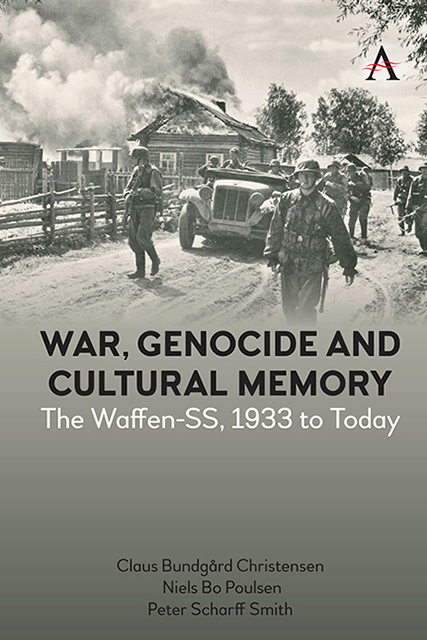Book contents
- Frontmatter
- Contents
- About the Authors
- Foreword
- Chapter One Introduction
- Part I The Organisational and Military History of the Waffen-SS
- Part II Ideology, Discipline and Punishment in the Waffen-SS
- Part III A European Nazi Army: Foreigners in the Waffen-SS
- Part IV Soldiers and War Criminals
- Part V Waffen-SS After 1945
- Epilogue The Nazi’s European Soldiers
- Appendix
- List of Abbreviations
- Bibliography
- Index
Chapter Eleven - Waffen-SS and Nazi Crimes
Published online by Cambridge University Press: 08 June 2023
- Frontmatter
- Contents
- About the Authors
- Foreword
- Chapter One Introduction
- Part I The Organisational and Military History of the Waffen-SS
- Part II Ideology, Discipline and Punishment in the Waffen-SS
- Part III A European Nazi Army: Foreigners in the Waffen-SS
- Part IV Soldiers and War Criminals
- Part V Waffen-SS After 1945
- Epilogue The Nazi’s European Soldiers
- Appendix
- List of Abbreviations
- Bibliography
- Index
Summary
In the summer of 1941, a German journalist was attached to Division Das Reich as a Kriegsbericter (war correspondent). On 29 June 1941, he wrote in his diary about the advance into the Soviet Union,
There are no longer other troops around. We are alone. […] The villagers are apprehensive and reserved. Another village – suddenly shots are heard from up front. At the village entrance our advance guard has been shot at. All vehicles […] turn into farms and side roads. […] I rush forward. A few Russians are f leeing their positions […] behind the village. Prisoners who have surrendered are brought back. Among them an eighteenyear-old, who looks like fifteen, and an elderly NCO who willingly acts as interpreter. I make a recording of the interrogation of the prisoners. We take the first red banners and red Soviet stars from their uniforms as souvenirs. On the commander's order and according to a divisional directive the prisoners are then shot. This is an occurrence, which makes me very sad.
Almost simultaneously, the 4th Army Corps noted in its war diary that not only did Division Wiking make a severe disturbance of the traffic around Lviv due to the troop’ bad road discipline, but civilians and prisoners-of-war were also shot out of hand on the roadside. Shortly afterwards, in other sectors at the eastern front Waffen-SS units like the cavalry brigade and 1st SS brigade started systematically murdering the local Jewish population. Subsequently, all Waffen-SS units employed at the eastern front were to play their role in the dramatic escalation of the Third Reich's atrocities that followed. For the Nazi system as a whole, as well as more specifically for the SS, the massive crimes committed at the eastern front (and its hinterland) originated in the culture of violence and crime that began during the so-called Kampfzeit (time of struggle) prior to 1933 and were institutionalized during the early years of Nazi rule and the campaign in Poland 1939.
The Waffen-SS became a major contributor to the regime's crimes. Regardless of where and when fighting was going on, its soldiers typically fulfilled their role as the race warriors that Himmler wanted them to be. Previous chapters have mentioned these crimes in passing, but in the subsequent two this topic will be scrutinised which includes looking at the context, reasons and dynamics of the Waffen-SS atrocities.
- Type
- Chapter
- Information
- War, Genocide and Cultural MemoryThe Waffen-SS, 1933 to Today, pp. 227 - 256Publisher: Anthem PressPrint publication year: 2022

